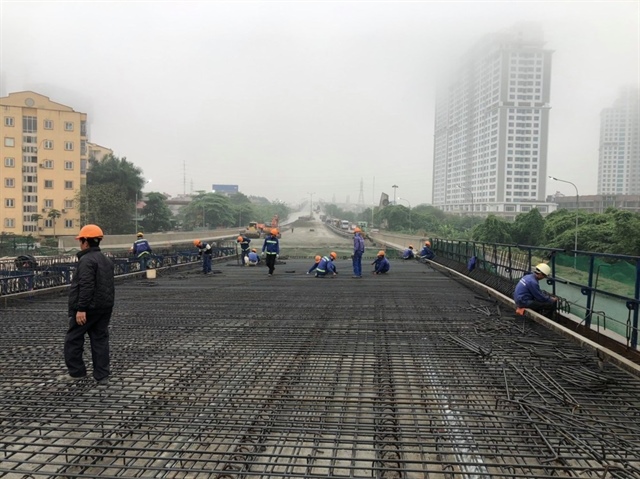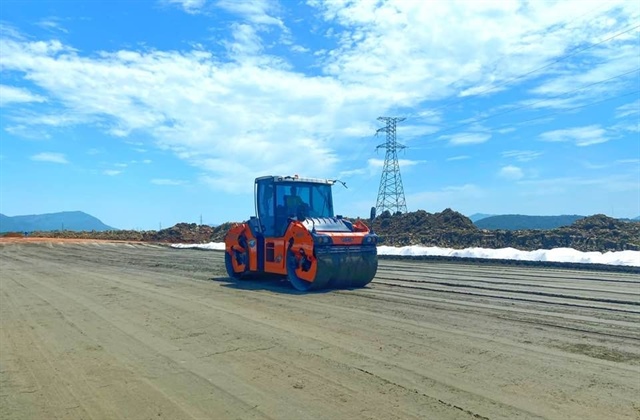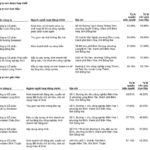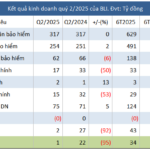Many provinces and cities have announced material prices that are not reflective of the actual market demand and supply. This has created an opportunity for material suppliers to engage in speculation, price gouging, and profiteering. To address this issue, we present an article by Mr. Do Duc Thang, from the Department of Economics and Construction Investment Management (Ministry of Construction).
According to current regulations, the Department of Construction announces the prices of construction materials, equipment, and other cost factors on a monthly and quarterly basis. However, the implementation of these regulations has revealed some shortcomings and limitations, allowing material suppliers to take advantage by speculating and increasing prices, which delays important national projects.
A significant gap between announced and selling prices
According to reports from project management boards, contractors, construction consulting units, and material production and trading enterprises, there are five to six main groups of issues that cause inconsistencies in the management of material, equipment, labor, and construction equipment prices, potentially leading to significant waste and loss in construction investments.
 |
First, announced prices are often slower to react to market changes, leading to significant discrepancies between announced and actual selling prices for many types of materials, equipment, and labor.
Second, enterprises have to allocate human resources to navigate through 34 Departments of Construction in different provinces and cities to announce prices, resulting in a waste of social resources.
Third, the management and announcement of material, equipment, and construction equipment prices lack a mechanism and legal framework for coordination between government agencies. Government agencies are tasked with copying prices from enterprises, but they lack the basis, tools, and legal grounds to determine and audit these prices. This situation is considered outdated and a precursor to significant waste and loss.
 |
Fourth, the database system for prices is fragmented, lacks synchronization, and is difficult to query and aggregate information, hindering efficient price management and announcement.
Fifth, cost management policies are inconsistent, and there is a lack of mechanisms to ensure the timeliness and accuracy of price information, impacting the ability to control project costs.
To address these shortcomings and limitations, a breakthrough change is needed in the announcement of material, equipment, labor, and construction equipment prices.
Many enterprises and units directly involved in construction projects have submitted proposals and recommendations to relevant authorities, including the Ministry of Construction, to overcome difficulties and improve the efficiency of price management. These suggestions range from updating unit prices and norms to cost management and product pricing solutions.
Most of the proposals advocate for the development of a single national website by the government to manage and announce material, equipment, labor, and construction equipment prices, with the Ministry of Construction taking the lead in managing this platform. This initiative is highly relevant and practical.
Enterprises announce prices, and the government verifies
Having a national website platform would aim to create a transparent market, reduce cumbersome administrative procedures, and lower compliance costs for citizens and businesses.
This platform should establish an automatic, transparent registration and listing price process, where enterprises will be assigned codes and manage their accounts; automatically log in and announce or adjust prices; take full responsibility for prices; update prices in real-time; and allow for transparent information searches…
 |
The website will also serve as a tool for government agencies to monitor, inspect, and audit price information, ensuring accuracy and transparency.
|
Price management, especially for construction materials, labor, and equipment, needs a significant transformation in the coming time to address the existing shortcomings. This will help government agencies, investors, and contractors expedite the disbursement of public investment capital. Additionally, it will enable enterprises producing and trading construction materials, equipment, and labor to be proactive in registering and listing prices, streamlining cumbersome administrative procedures, and reducing compliance costs for citizens and businesses. |
However, to establish this platform, the Ministry of Construction must promptly advise and propose the completion of the legal system, specifically the Law on Construction and its guiding documents, towards implementing price announcements on a single national website platform.
Furthermore, we need to establish comprehensive and well-defined mechanisms and regulations. These should clearly outline the roles and responsibilities of the Ministry of Construction (as the lead agency), relevant ministries, local authorities, financial agencies, tax offices, and customs offices, among others.
Particularly, the law should clearly define the roles, responsibilities, and authority of investors, consultants, contractors, as well as enterprises producing and trading construction materials, equipment, and labor.
The synchronized and close coordination between all relevant parties will ensure data management consistency, information sharing, and uniform application of regulations nationwide. This will create a more favorable and transparent business environment for enterprises and reduce compliance costs for citizens and businesses.
On the part of enterprises, they should proactively research and apply new technologies to optimize production costs, improve product quality, and provide transparent and accurate price information.
With this approach, we will have an important premise for the sustainable development of Vietnam’s construction industry, ensuring efficient investment and contributing to the country’s overall development.
|
Prime Minister requests strict handling of enterprises engaging in price gouging and speculation According to the Ministry of Construction, many localities have announced material prices that are not reflective of the actual market demand and supply. This has created an opportunity for material suppliers to engage in speculation, price gouging, and profiteering. In mid-June, Prime Minister Pham Minh Chinh issued a dispatch to the Ministers of Public Security, Construction, Agriculture and Rural Development, and Industry and Trade, as well as the Chairpersons of the People’s Committees of provinces and centrally-run cities, requesting stricter inspections and handling of acts of hoarding, cornering the market, and unreasonably increasing construction material prices. The Prime Minister requested that the provinces and cities announce construction material prices and construction price indices that truly reflect the constituent costs and are in line with market prices. For materials with abnormal price fluctuations, announcements should be made on a monthly basis or earlier if necessary. |
Do Duc Thang, Department of Economics and Construction Investment Management, Ministry of Construction
– 11:21 13/08/2025
The Largest Province Cracks Down on Real Estate Brokers
The Lam Dong Provincial Department of Construction has advised all property developers to ensure they have adequate financial capabilities and refrain from illegal fundraising practices. According to the latest guidelines, developers are only permitted to sell future homes if they meet the conditions stipulated in the Housing Law and the 2023 Real Estate Business Law.
Stock Market Blog: Bulls Run Wild, the Party’s Not Over Yet
The flow of capital is shifting towards speculative opportunities, while the blue-chip group is experiencing a divergence. If VCB, VIC, and VHM had not been restrained today, VNI and VN30 could have further boosted market sentiment.
“A Taxing Matter: Curbing Property Speculation with Time-Based Levies”
The Ministry of Finance is proposing to study and implement a tax on capital gains from real estate transfers. This progressive initiative aims to revolutionize the nation’s tax landscape by introducing a nuanced approach to taxation, one that is sensitive to the varying financial circumstances of citizens. By taking into account the duration of property ownership, this proposed tax adjustment has the potential to foster a more equitable society, where the tax burden is distributed in a manner that accounts for the diverse economic realities of the populace.














































